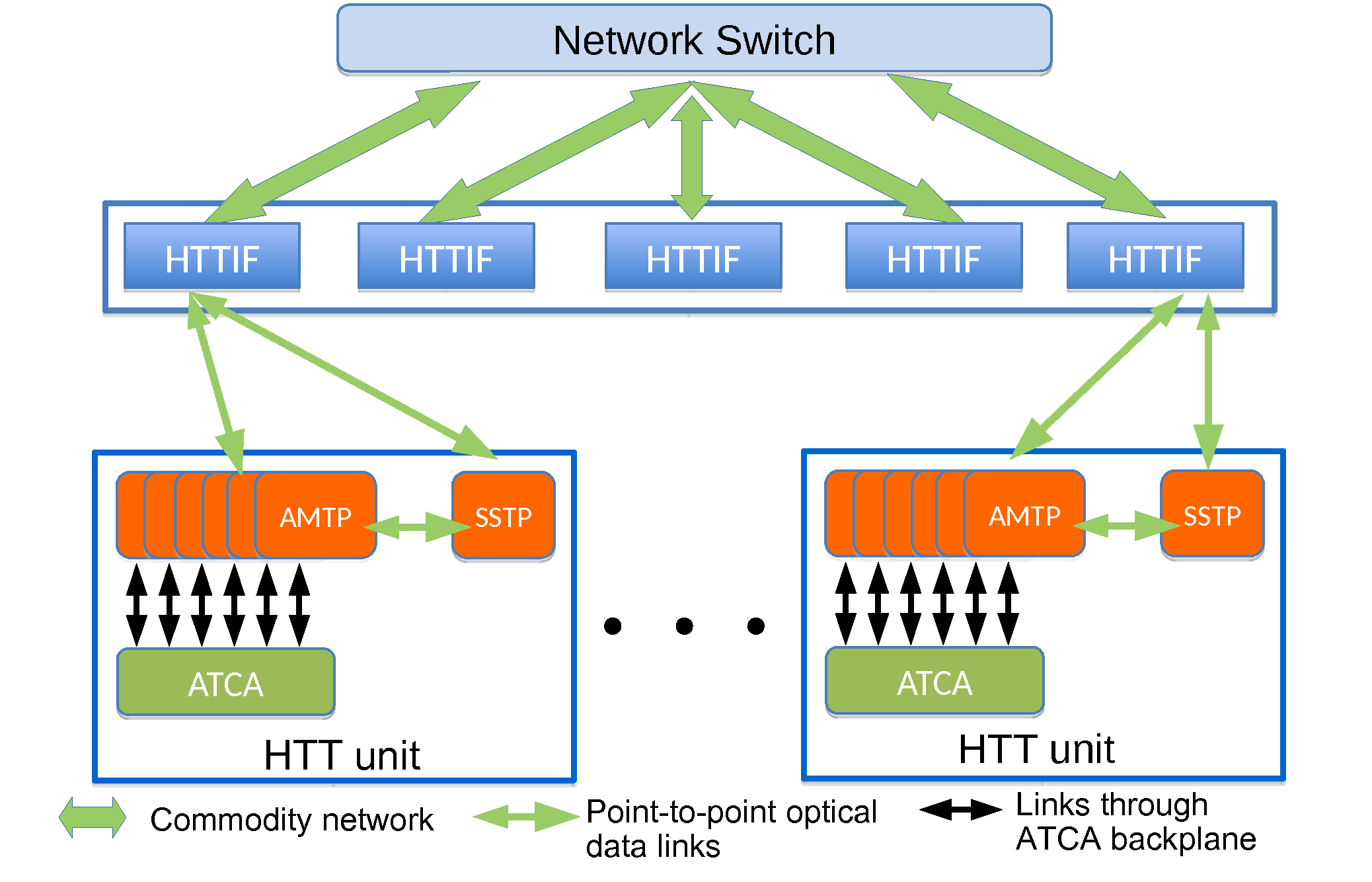Trigger
Global Feature Extractor / Fast Tracker / Global Event Processor / Hardware Track Trigger
The ATLAS trigger is the first stage of decision making for selecting interesting collisions for physics analysis.
We develop and deploy novel algorithms on state-of-the-art high-speed electronics to analyze LHC events in real time.
Our group plays leading roles in the ATLAS Phase I and II upgrades for global calorimeter and track reconstruction.
Our group plays leading roles in the ATLAS Phase I and II upgrades for global calorimeter and track reconstruction.
Phase I Trigger Upgrades
gFEX: Global Feature EXtractor
The global feature extraction (gFEX) system is a hardware-based boosted object jet finder for the ATLAS trigger system. gFEX is an official Phase I upgrade project in ATLAS and will be operational for Run 3 of the LHC, and we have already recorded pp collision data as of Oct 17, 2018!
This system can process the entire calorimeter on a single electronics board. Dedicated trigger algorithms are developed to reconstruct signatures of Lorentz-boosted particles such as top quarks, W/Z and Higgs bosons.
By allowing for trigger decisions to be based on a large, more global region of the calorimeter, the overlap and proximity between the local energy depositions can be incorporated as part of the trigger decision. New jet algorithms can then be deployed at Level-1 such as the large-radius anti-kT algorithm.
Jet substructure information can also be incorporated into the selection algorithm in order to reduce the rate from light jet backgrounds while maintaining high efficiency for Lorentz-boosted massive particles.
In addition to jet substructure, gFEX will also implement a new pile-up suppression scheme based on an energy-density-based subtraction for jets and missing transverse energy.
As the instantaneous luminosity increases, this subtraction scheme allows for calorimeter-based jet thresholds to remain constant.
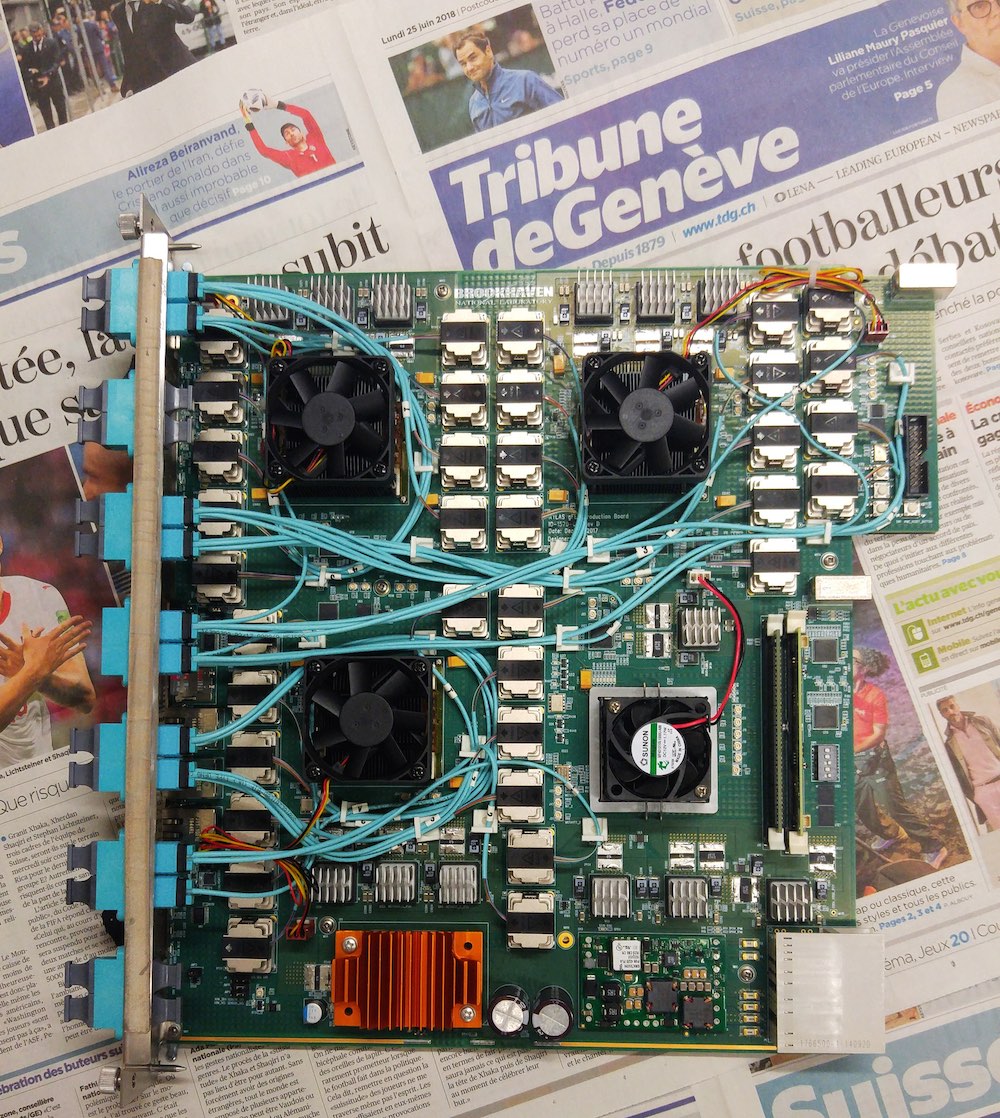
Production version of a gFEX electronics board
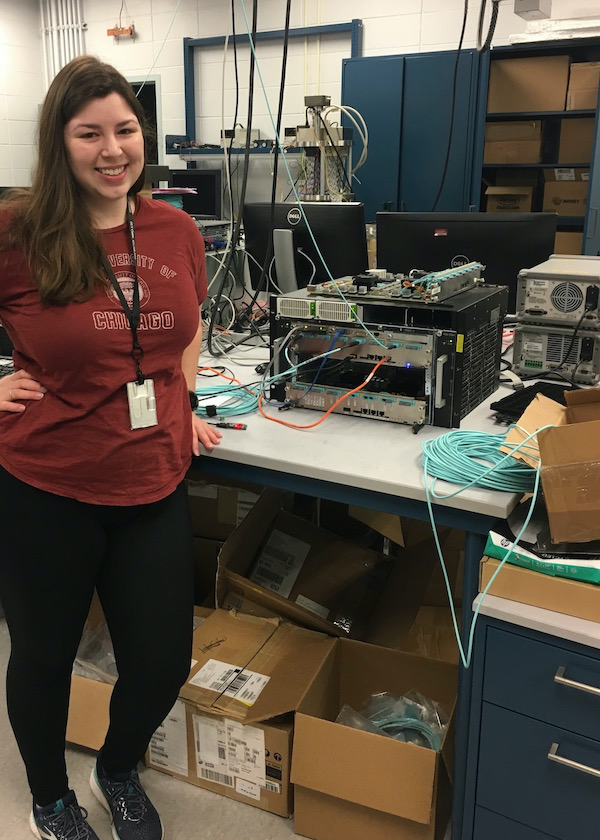
Graduate student Emily Smith who leads gFEX commissioning efforts

Postdoctoral researcher Cecilia Tosciri (left) with Emily Smith at CERN
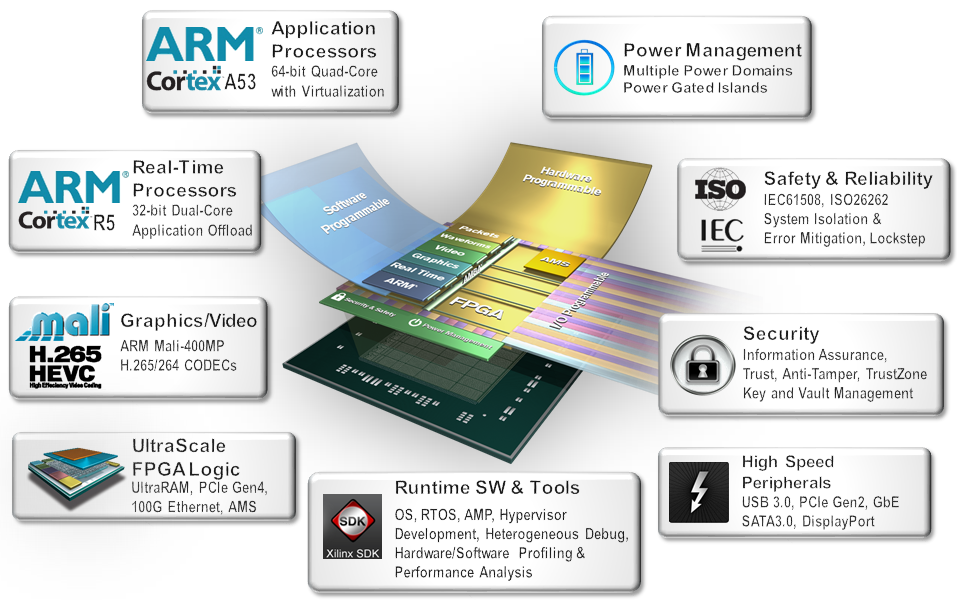
Xilinx Zynq architecture overview
FTK: Fast TracKer
The Fast TracKer (FTK) was a hardware track finder for ATLAS high-level trigger system that operated during Run 2. FTK can identify important physics processes through their track-based signatures.
Tests of FTK performance and comparisons with simulation are reported in a Journal of Instrumentation publication. The experiences pave the way for the Hardware Track Trigger being prepared for Phase II upgrades.
Many new physics extensions to the standard model (SM) yield enhanced production of b quarks and tau leptons as a result of non-SM interactions.
Since b quarks have a long lifetime and large mass as compared to most quarks, they tend to leave a track-based signature of a displaced vertex several millimiters from the primary interaction. Tau leptons can be identified through their hadronic decays to multiple pions which produce narrow jet cones containing 1 or 3 tracks.
The FTK allows the possibility of rapid b-quark and tau lepton identification within the online trigger system by providing a list of tracks with excellent resolution at the start of Level 2 processing.
This will provide the experiment with much flexibility for identifying new physics signatures with higher efficiency while reducing trigger rates. At the same time, as instantaneous luminosities increase the number of additional interactions in each bunch crossing rises.
The FTK will allow us to maintain low trigger rates and high efficiency for electrons and muons by asking for lepton isolation only using tracks that point to the interaction vertex that produced the lepton.
The FTK will also be able to provide a complete list of near-offline quality tracks by the time Level-2 processing begins, which can be used in conjunction with calorimeter and muon information to further constrain the event characteristics of interesting physics processes.
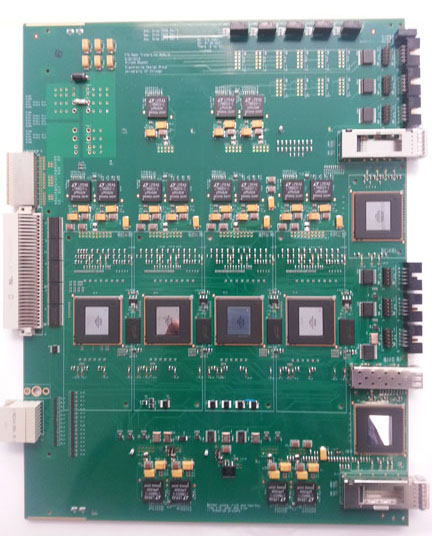
FTK Auxiliary Board
Phase II Trigger Upgrades
The UChicago ATLAS group is leading several upgrades to the ATLAS Trigger system in preparation for the High-Luminosity LHC. The Phase II TDAQ Technical Design Report provides a detailed overview.
The upgrades are necessary to meet HL-LHC physics goals given the anticipated increase in instanteous luminoisity. Specifically, we are leading efforts preparing the Global Event Processor (GEP) and the Hardware Track Trigger (HTT).
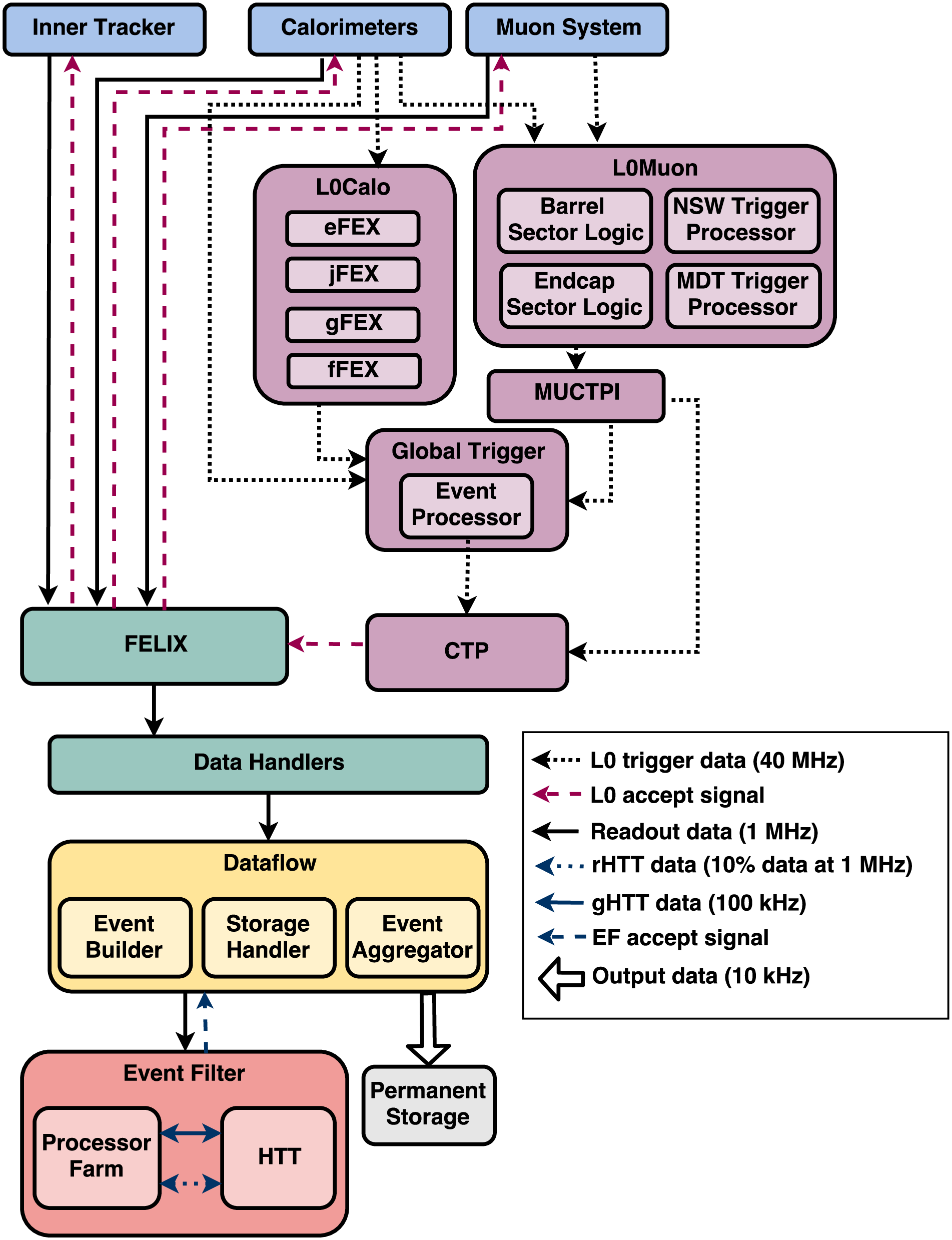
Phase II Trigger Overview
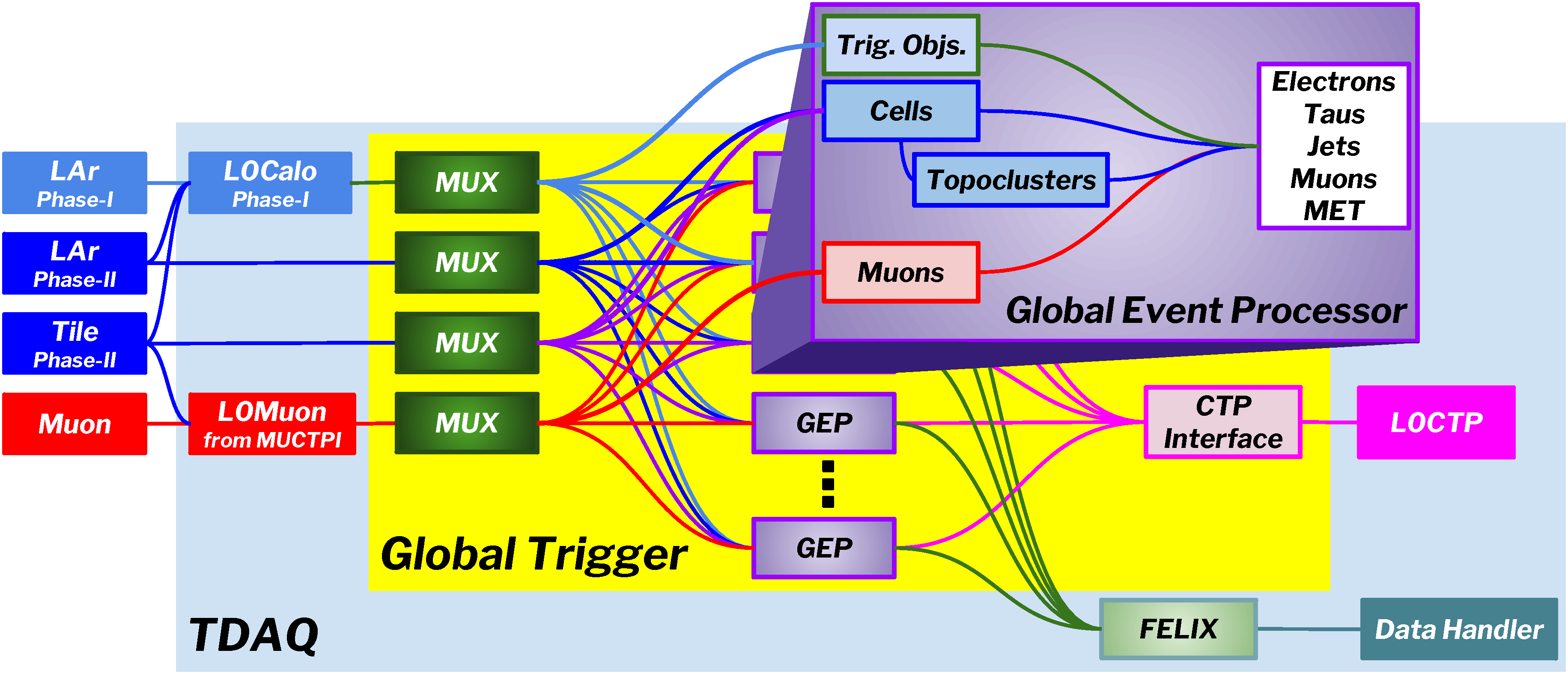
Global Event Processor (GEP)
